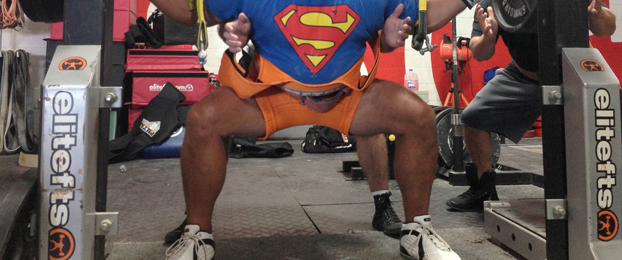
This series is an introduction to periodization. Too often, I’ve come across people who don’t understand the foundations of training so I decided to fix this situation. Obviously, I’ll need to keep many details out for the sake of simplicity.
Periodization has filled hundreds of thousands of pages and is the main subject of university kinesiology programs. I’ll try to keep it as simple as possible, which is why I use graphs throughout to better illustrate the concepts. I’ve worked for quite a long time to come up with the simplest way to explain and illustrate these concepts. This ended up being much longer than I expected, but I hope you’ll enjoy it.
1. The basic principles of training: Theories of training
The theory of training has defined many theoretical principles of training. Most of them don’t need to be covered here. I use the word “principle” as a vague term that may not have the same significance as what would normally be taught.
1.1 The principle of overcompensation
When you train, you become weaker and perform less in your sport. Then you recover and eventually become better. That’s overcompensation.

Image caption: Figure A: Overcompensation
In figure A, the middle line represents a state of homeostasis or a state where there is no improvement. After the maximum peak of overcompensation, you come to a state of involution, where performance gradually goes back to a state of homeostasis.
In figure B, I drew three different lines. These reflect the effects that three different loads of training would have on performance and recovery. Notice how all three lines have approximately the same training duration. The difference is in the speed of recovery and the training effect (depth of load versus height of overcompensation curve).

Image caption: Figure B: Different training loads
It becomes clear that the best time to train would be at the moment of the highest peak of overcompensation (this is the theory of linear periodization). This is not always possible, but we should be as close as possible to it. Over a longer time period, this would result in:

Image caption: Figure C: Gradual increase in performance
As you can see in figure C, even though we can’t always have totally recovered in time for the next training, the cumulative effect will still result in a gradual increase in performance. Notice how the curve is not a “perfect sequence” of overcompensation. We should still strive for overcompensation because overlooking this concept would result in the dreaded effect of overtraining.

Image caption: Figure D: Gradual decrease in performance
1.2 Different ways to stress your body
There are four components in a training load (three are often taught, and I added a fourth one).
- Duration/volume: how long the training actually lasts (A concept that is also used in strength sports is volume. It’s expressed as “sets X reps X weight” rather than hours (5 sets of 5 reps at 500 lbs = 12500 lbs total volume.)
- Frequency: how often you train during the week
- Intensity: often expressed in the percentage of your max 1RM
- Density: amount of time spent resting between sets (This one isn’t usually taught as a load component, but I like to include it. It’s only applicable to strength sports. If you lift for 60 seconds and then take a 180-second rest, your total density would be 25 percent.)
1.3 Different “spheres” of load in training
Your body isn’t stressed in the same way depending on the type of training you do. The different spheres are:
- Endocrinal: A good example is the effect of training on testosterone and cortisol. Testosterone is high at the beginning of training and gradually decreases. The reverse is true for cortisol.
- Metabolic/muscular: This includes energy production (ATP synthesis) and muscle recovery. Recovery from this type of stress is quick, except maybe in the case of delayed onset muscle soreness (DOMS), where tiny muscle tears appear everywhere in the affected muscle. ATP/CP is replenished in a few minutes, lactic acid is cleared within an hour, and glycogen can be replenished within 24–36 hours.
- Central nervous system (neuro-psychological): This stress is particularly present in competition, where mind games can be played.
- Central nervous system (neuro-muscular): This is the biggest stress when weight training. Neuro-muscular recovery is 7–11 times slower than metabolic/muscular recovery. Nervous cells tend to adopt a state of inhibition for quite a few hours after a heavy load.
- Cardio-pulmonary: This is particularly present in cardiovascular sports such as cycling, and running.
1.4 Different ways to measure performance
Performance can be measured through four criteria—speed, strength, flexibility, and endurance.
- In powerlifting, strength is the most important. Speed is just a bonus. In Olympic lifting, both speed and strength are important. In both cases, a minimum level of flexibility is important.
- In cycling, long distance running, and skiing, endurance is the most important.
- In sprinting sports, speed and strength provide power.
1.5 The principle of progressive increase of load in training
This one might seem like a no-brainer. Unfortunately, it’s probably the most misunderstood principle of all. In weight training sports, we will naturally have a tendency to increase the load by increasing the weights as we get stronger. Even though you are stronger, this still results in a higher stress on the neuro-muscular sphere. But, as discussed in section 1.2, you can also increase the load by increasing duration/volume, frequency, and density. Increase your training load too quickly and your body won’t have the time to adapt. You will reach a state of overtraining.
Stay tuned for part 2!
Elite Fitness Systems strives to be a recognized leader in the strength training industry by providing the highest quality strength training products and services while providing the highest level of customer service in the industry. For the best training equipment, information, and accessories, visit us at www.EliteFTS.com.








